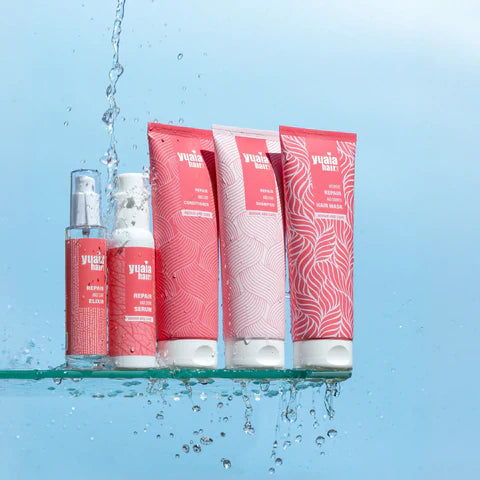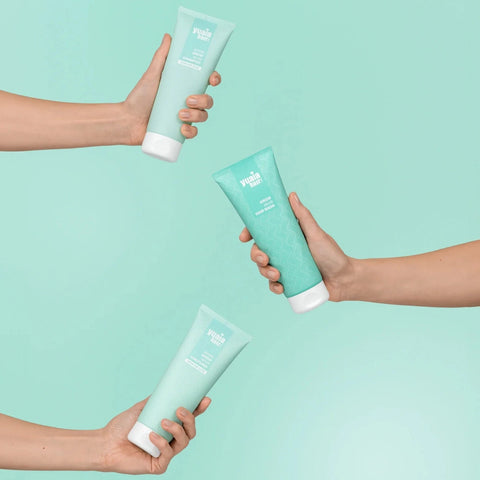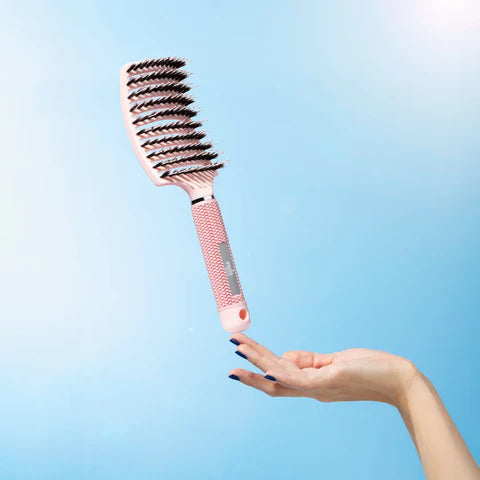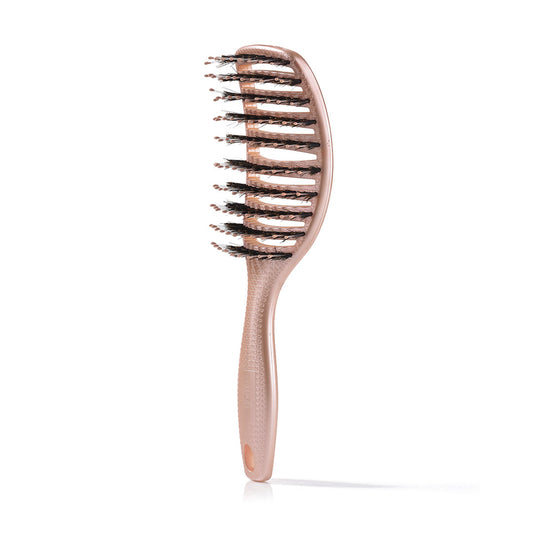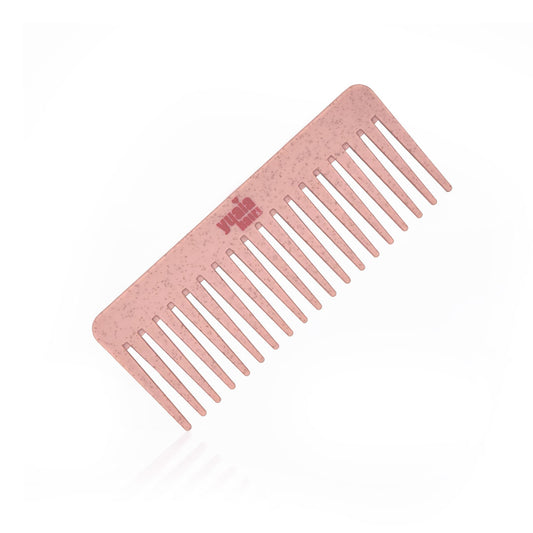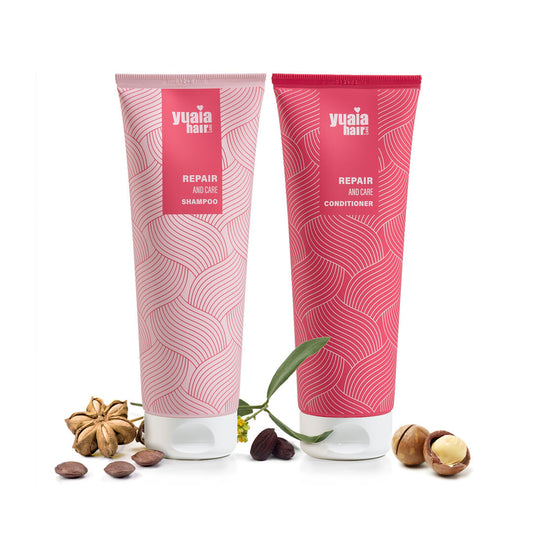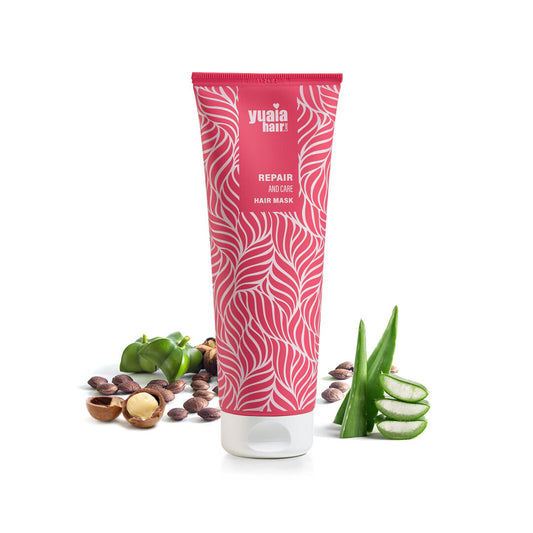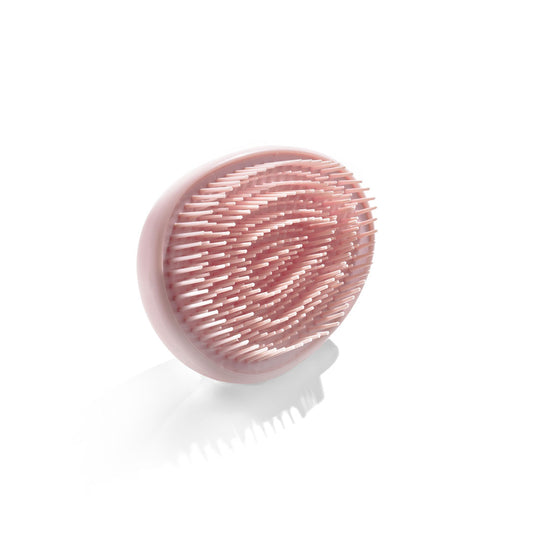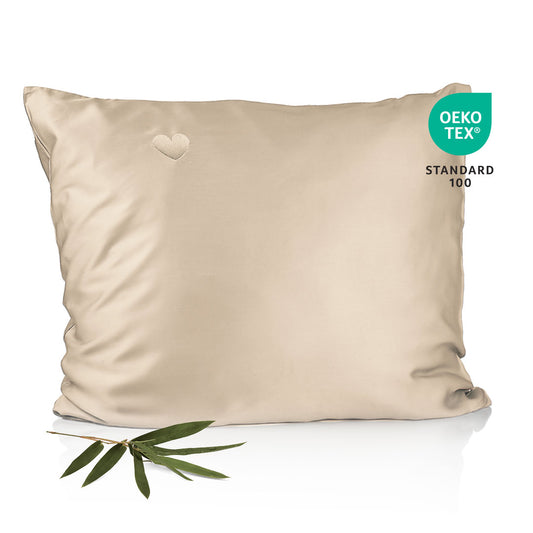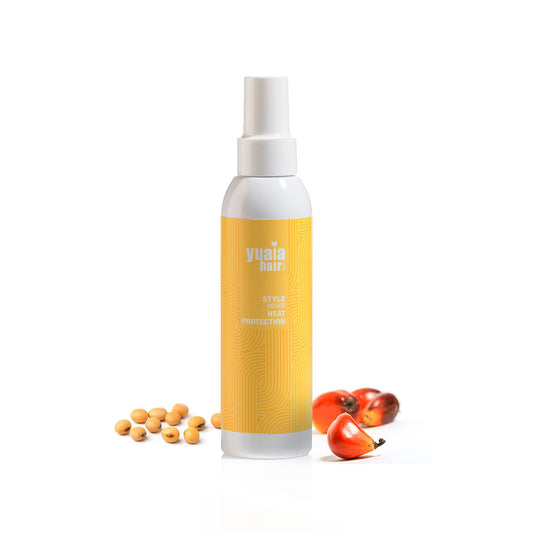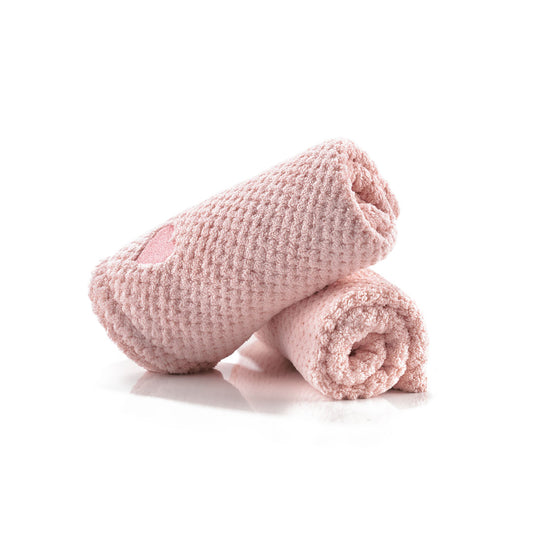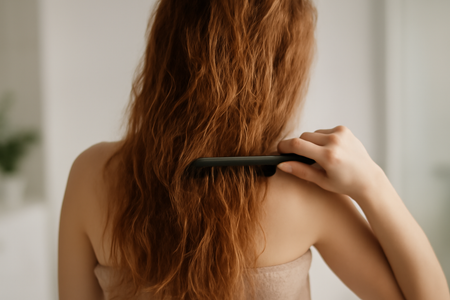
How to prevent knots in long hair: Simple strategies for smooth strands

ohi Nanna Bundgaard | 05. October 2025 | Lukemisaika: 6 minuutti
Lue lisää kirjoittajastaLong hair, while beautiful, often comes with the challenge of tangles and knots. These pesky snarls can be both frustrating and damaging, leading to breakage and an overall lack of luster. Understanding why long hair is prone to knots is the first step in preventing them. The primary culprits are friction and dryness. As hair grows longer, it rubs against clothing and other surfaces, increasing the likelihood of tangles. Additionally, long hair tends to be older and may suffer from dryness, making it more susceptible to knotting.
Why do tangles impact hair health?
Frequent tangles don't just affect the appearance of your hair; they can also lead to significant damage. When knots form, they create weak points in the hair shaft. Attempting to brush or comb through these tangles can cause breakage, split ends, and a rough texture. Over time, this damage can accumulate, resulting in hair that looks dull and feels brittle. Maintaining smooth, tangle-free hair is important for both aesthetics and overall hair health.
Proactive methods for smooth strands
Fortunately, there are several proactive strategies to keep your hair smooth and free of knots. These methods focus on hydration, gentle handling, and protective styling. Regular moisturizing with sulfate-free shampoos and conditioners can help maintain the hair's natural moisture balance, reducing dryness and friction. Additionally, incorporating deep conditioning treatments weekly can keep hair smooth and manageable.
When it comes to detangling, using the right tools and techniques is essential. Starting from the ends and working your way up with a wide-tooth comb or a boar bristle brush like our Curvy Brush can minimize breakage. Detangling is most effective when hair is damp or coated with conditioner, as this reduces resistance and makes the process gentler on the strands.
€24,99
Protective styling can also play a significant role in preventing tangles. Sleeping on a silk or satin pillowcase reduces friction, while braiding your hair before bed can prevent overnight tangles. During the day, wearing hair in loose braids, ponytails, or buns can minimize exposure to elements that cause tangling, such as wind and friction. By implementing these strategies, you can enjoy long, smooth, and healthy hair without the hassle of constant knots.
Hydration is key
Maintaining adequate moisture levels in your hair is essential for preventing knots, especially for those with long hair. Regular use of sulfate-free shampoos and conditioners helps retain the hair's natural oils, reducing dryness that can lead to tangles. Deep conditioning treatments are another effective way to keep hair smooth and manageable. These treatments penetrate the hair shaft, providing intense moisture that helps prevent knots from forming.
Gentle detangling techniques
Proper detangling methods are crucial for minimizing breakage and preventing knots. Always begin detangling from the ends of the hair, working your way up to the roots. This technique reduces stress on the hair shaft and minimizes breakage. Using a wide-toothed comb is ideal for this process, especially when hair is damp or coated with conditioner. This approach allows for easier glide through the hair, reducing the risk of damage.
Protective nighttime routines
Your nighttime routine can significantly impact the health and appearance of your hair. Sleeping on a bamboo pillowcase can reduce friction and prevent tangles. Bamboo pillowcases are gentle on the hair, helping maintain its smoothness overnight. Additionally, consider braiding your hair loosely before bed. This protective style helps keep your hair contained, reducing the chance of knots forming as you sleep.
Bambu tyynyliina
100% Lyocell Bamboo®-OEKO-Tex® -sertifioitu-hypoallergeeninen ja lämpötilan säätely€26,99 €53,50
Daytime protective styles
During the day, adopting protective hairstyles can help minimize tangles. Loose braids, ponytails, or buns are excellent options for reducing exposure to environmental factors like wind and friction. These styles not only protect the hair but also distribute tension evenly across the scalp, which can prevent breakage. Regularly changing the position of your ponytail or bun can also help avoid stress on the same areas of the hair, further preventing damage.
Minimize harsh hair practices
Limiting harsh practices is another key strategy in preventing knots. Overwashing can strip the hair of its natural oils, leading to dryness and tangles. Instead, wash hair as needed and use a microfiber towel to gently dry it, which helps reduce friction. When heat styling is necessary, always use a heat protectant spray to shield the hair from damage. This protective layer helps maintain hair health and minimizes the risk of knots.
Mikrokuitupyyhe hiuksiin
Super-absorbent microfibre shortens drying time and reduces frizz and breakage.€12,99 €26,50
Brushing with care
Regular brushing is essential for distributing natural oils and preventing knots. The right brush can make all the difference. Our Curvy Brush with boar bristles is designed to gently detangle and smooth hair. Regular use of a brush like this helps maintain hair health by evenly distributing oils, which naturally conditions the hair and reduces the likelihood of tangles.
Hanki sinulle 10% alennuskoodi
Vastaanota hiuksillesi parhaita vinkkejä ja temppuja Lottesta ja Nanna 🥰
Additional considerations for maintaining smooth hair
Beyond the foundational strategies of hydration, gentle detangling, and protective styling, there are additional considerations that can enhance your hair care routine. These insights can make a significant difference in keeping your long hair free from knots and tangles.
Using the right tools
Investing in the right tools is essential for maintaining smooth, tangle-free hair. A high-quality detangling brush or Curvy Brush with boar bristles can gently work through knots without causing breakage. These brushes are made to distribute natural oils evenly, which helps keep hair smooth and healthy.
Choosing the right hair care products
Using products that cater specifically to your hair type can also prevent knots. At Yuaia Haircare, we offer a Rosemary oil that nourishes and strengthens hair, reducing the likelihood of tangles. This oil can be applied to damp hair to enhance moisture and smoothness.
Environmental factors and hair care
Environmental factors such as humidity, wind, and pollution can contribute to tangling. To protect your hair, consider using a lightweight leave-in conditioner or serum to create a barrier against these elements. Additionally, wearing a hat or scarf when facing harsh weather conditions can provide an extra layer of protection.
Frequently asked questions
What are the best products for preventing knots in long hair?
Using sulfate-free shampoos and conditioners is key. Our Grow and Glow range is excellent for fine hair, while the Repair and Care line is perfect for dry or colored hair.
How often should I trim my hair to prevent knots?
Regular trims every 6-8 weeks can help remove split ends, which often lead to tangling. Keeping the ends healthy is essential for maintaining smooth hair.
Can protective hairstyles really help reduce knots?
Yes, protective styles like braids or buns can minimize exposure to elements that cause tangling, such as wind and friction, thus reducing knot formation.
Is there a specific hair type more prone to knots?
Curly and fine hair types are generally more prone to tangling due to their texture and structure. These hair types require more attention and care to prevent knots.
How does diet affect hair tangling?
Overall hair health plays a role in preventing tangles, but specific dietary details are not covered here. Ensuring your hair is well-nourished and hydrated is key to reducing knots.
Saat 10 % alennuskoodin sähköpostiisi
Vastaanota hiuksillesi parhaita vinkkejä ja temppuja Lottesta ja Nanna 🥰
 2-5 päivän toimitus
2-5 päivän toimitus
 100 000+ tyytyväistä asiakasta
100 000+ tyytyväistä asiakasta
 Tyytyväisyystakuu
Tyytyväisyystakuu


